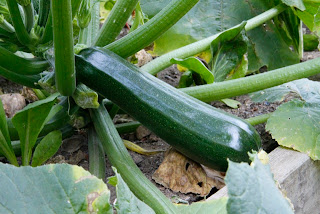 |
| Potatoes and other potato bed treasures |
To be fair, these weren't optimal conditions, and this potato planting was a bit of an experiment in the first place. Most of my seed potatoes went into a raised bed in the front yard and a series of potato towers in the backyard in March. This location became available in early April when we moved a bunch of old logs from the side yard to make a hugelkultur bed and were left with a big pile of light, loose soil consisting mostly of decomposed wood and leaves. I still had a handful of potatoes to plant and it looked like a great place to dig some trenches, because potatoes grow well in loose soil high in organic matter, and also because the large open area and soft soil would make for easy harvesting.
The only potential problem was the shade. I wasn't sure how much light the area would get, but I decided to throw some potatoes in there anyway and see what happened. What happened was there was definitely not enough sun, as you can see by the spindly stems of the resulting potato plants:
 |
| Leggy potato plants |
I'm wondering if light wasn't the only problem, though; perhaps the squirrels uncovered and ate a few potatoes in the course of burying their pine tree booty? I don't know enough about squirrel diets to know if that's a possibility. And I'm not sure how I missed such a big rock when I planted the potato pieces in the first place, but I wasn't surprised when the digging fork hit it, given how much river rock was scattered throughout the yard by the prior owners.
The good news is that the potatoes I did get were super tasty, with a perfect, dry fluffy texture. I had some of them for dinner with a pat of butter and a sausage from the Co-op. The other good news is that the late-crop German Butterballs I planted in potato towers in the back are looking really healthy, so I have my fingers crossed those will produce a nice batch of spuds.
Next year, I'll go back to planting potatoes in a full-sun location and save this side yard plot for an edible that can tolerate partial shade--anybody got any ideas for what that might be?

















































